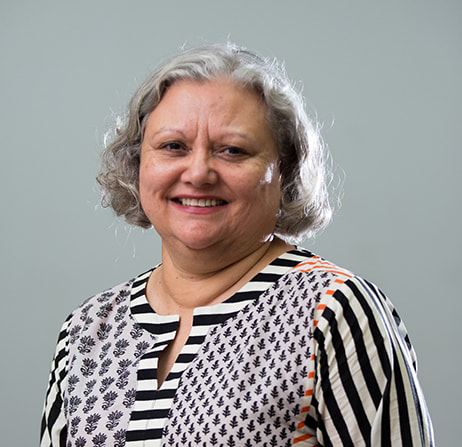Niilofur Farrukh sees the Karachi Biennale as a beacon of public art, fostering inclusivity, dialogue, and resilience in Pakistan's evolving cultural
Niilofur Farrukh sees the Karachi Biennale as a beacon of public art, fostering inclusivity, dialogue, and resilience in Pakistan’s evolving cultural landscape.
Meeting CEOs is often intriguing, but Niilofur Farrukh is far more than a title-holder. She embodies a living, breathing art institution. My connection with her dates back to 2017 when the Karachi Biennale’s inaugural iteration was underway. Even amidst the chaotic buzz of brainstorming, she radiated excitement and hospitality—traits that have come to define her leadership.
Over the years, Niilofur has worn many crowns: author, educationist, editor, and art critic. I visited her home on a dusky Sunday afternoon to discuss the 2024 Karachi Biennale. This fourth iteration had a confident energy, fully poised for its grand inauguration.
Walking into her house was like stepping into an art haven. Every corner seemed to breathe creativity. The servant directed us to a drawing room adorned with subtle artistic touches—a mirror caught my attention as I fixed my hair while instructing the videographer on angles and backgrounds. (Our video interview will soon be available online.)
Then, in walked Niilofur, exuding warmth and confidence. Her kurta shalwar paired with her signature bangles added a traditional elegance. With her calm demeanor, my pre-interview jitters melted away. This wouldn’t be an ordinary career Q&A but a deep dive into the person behind the CEO title—her pressures, triumphs, and vision.
I started by asking about her vision for the Biennale’s future and its impact on emerging Pakistani artists.
“Any exposure that imparts knowledge is valuable,” she began thoughtfully. “We lack a national museum, but the Biennale acts as a pop-up museum where students can engage with museum-caliber art from both local and international artists. Beyond the exhibitions, our discursive sessions foster important dialogues. For instance, our last Biennale tackled decolonization, drawing in global voices.”
She emphasized that the Biennale isn’t just about displaying art; it’s an evolving platform encompassing education, dialogue, and exposure to contemporary art forms beyond traditional painting and sculpture. “This exposure broadens young minds and helps them think beyond conventional boundaries,” she concluded.
I raised a point often debated: the public’s limited understanding of contemporary art. How does the Biennale address this?
“Historically, art was seen as purely illustrative,” Niilofur said. “Today, as people become more tech-savvy, they’re starting to view art as knowledge, much like a book. Understanding art requires effort—it’s a partnership between the artist and the audience. We need to encourage people to think critically. The Biennale gives them that chance. Complexity invites exploration, and exploration broadens minds.”
The Biennale’s curator announcements are always shrouded in mystery and excitement as well. This year, Waheeda Baloch from Jamshoro was chosen—a move that stirred excitement.
I asked Niilofur about Waheeda’s selection.
“Our criteria include curatorial experience, connection to Sindh, and thematic understanding,” Niilofur explained. “Waheeda excels in all these areas. She’s a researcher, a teacher, and a performance artist with strong ties to rural and urban communities. And, of course, we wanted a woman curator,” she added with a chuckle.
The 2019 controversy surrounding Adeela Suleman’s installation left a significant mark on the Biennale. I asked how they navigated such challenges and ensured artist security.
“Criticism accompanies any large-scale celebration,” Niilofur admitted. “Selecting artists is solely the curator’s prerogative, but there’s always scrutiny. We conduct open calls, portfolio reviews, and interviews to ensure the selected artists align with the Biennale’s vision. It’s a rigorous process.”
She acknowledged the risks artists take but maintained a stance of cautious optimism. “We protect our artists, but they must also be mindful. Public art invites diverse perspectives. Our current theme, Rizq, will spark different interpretations, but that’s the beauty of it.”
Finally, I asked about the Biennale’s future.
“Our long-term goal is to become the face of public art in Pakistan,” Niilofur said passionately. “We need museums, and the Biennale is filling that void. We’re nurturing talent and fostering a dialogue between art and the city. Our themes resonate globally, but we stay rooted in local narratives.”
As we wrapped up, Niilofur shared a hopeful note: “In challenging times, art uplifts spirits. Our role is to keep this dialogue alive and thriving.”
After tea and light conversation, she resumed her CEO role, ready for the day’s meetings. As I left, I knew this encounter was one to remember. Until we meet again—perhaps to unveil the fifth Karachi Biennale curator.
